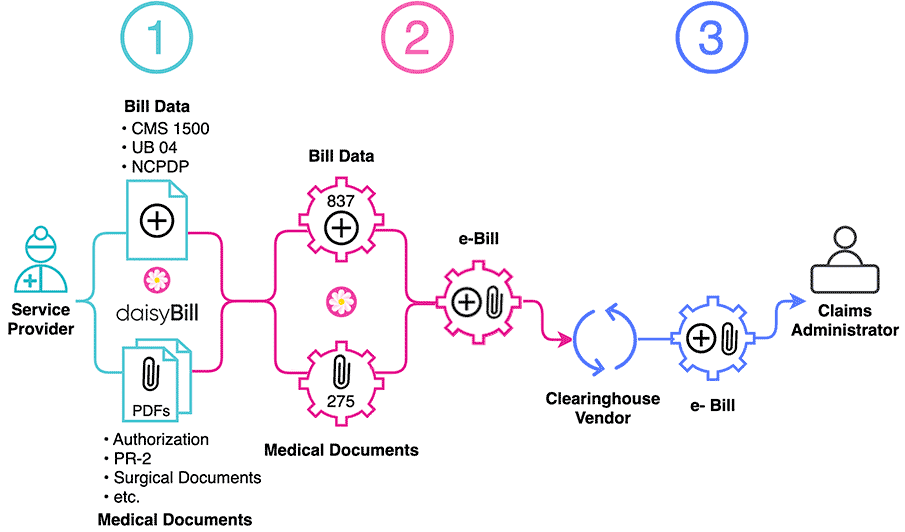Never Mail A Bill for Workers' Comp Treatment Again

Daily, we hear from providers who spend significant money on paper, toner, and postage to snail-mail workers’ comp bills.
Worse, many bills must be mailed multiple times after weeks or months without payment.
Mailing bills wastes time and actual dollars and cents. As costs increase, providers come closer and closer to giving up on treating injured workers. Fortunately, many of those providers come to us first — and find out that mailing bills is entirely unnecessary.
We humbly suggest the following resolution for any provider who treats injured workers: stop mailing workers’ comp bills. There’s simply no need.
How to Keep Bills Out of the Mail
For Medicare and private insurance, sending bills electronically is the only option. However, transmitting workers’ comp e-bills and the required supporting documents (through the correct clearinghouse and Payer ID) is more technically challenging and complex.
Because of this complexity, many providers who attempt to use standard e-billing software built for private insurance and Medicare find that their bills and documents fail to make it to the payer.
Understandably, these practices decide paper bills are the best option for workers’ comp. But there’s one thing these practices haven’t tried: e-billing software built explicitly for workers’ comp.
Properly transmitting a workers’ comp e-bill requires routing it to the specific clearinghouse used by the claims administrator (i.e., the “payer"). With only two exceptions, all workers’ comp claims administrators use one of 4 clearinghouses: Data Dimensions, Jopari, Carisk, and P2P.
Saying goodbye to mailing (and losing) workers’ comp bills requires the following three steps, illustrated below:
- The provider imports or enters bill data and uploads PDFs of the medical documents the provider wants to send with the e-bill.
- The e-billing software converts the bill data into a standardized “837” file, packages the PDFs into a “275” file, and transmits both as a complete e-bill submission to the clearinghouse hired by the claims administrator.
- The clearinghouse transmits the e-bill to the claims administrator.
When e-bills and documents are correctly transmitted, nothing gets lost. No stamps, no envelopes — and no delays in payment.
Faster payment means easier revenue management, as bills aren’t in Accounts Receivable limbo for months. Plus, you can instantly see which payments or denials should be appealed, increasing revenue (sometimes drastically).
Paper Billing Is Over
By the end of 2023, daisyBill will have submitted over 2.5 million workers’ comp e-bills. Fun fact: just 0.4% of those bills will go through the mail.
This tiny percentage of mailed bills represents (generally small) payers located in states that don’t legally require acceptance of workers’ comp e-bills.
Even better, the providers using daisyBill never mail a bill. That’s because, on the rare occasion when mailing is necessary, we handle it on the provider’s behalf. Provider staff simply imports or enters the billing information into daisyBill, uploads PDFs of the medical documentation, and clicks ‘Send.’ That’s it.
If the bill is one of the 0.4% that needs to be mailed, we take care of licking the envelopes. Either way, the practices using daisyBill:
- Never waste money on paper, envelopes, or postage
- Get paid for injured workers' treatment in 8.9 working days on average
Paper billing is bad for business — which means it’s terrible for injured workers, who have increasingly fewer providers willing to treat them. Fortunately, providers can opt out of paper billing forever.
daisyBill makes workers’ comp billing easier, faster, and less costly. Request a free demonstration below.
REQUEST DEMO
DaisyBill provides content as an insightful service to its readers and clients. It does not offer legal advice and cannot guarantee the accuracy or suitability of its content for a particular purpose.


.gif)


.png)
.gif)